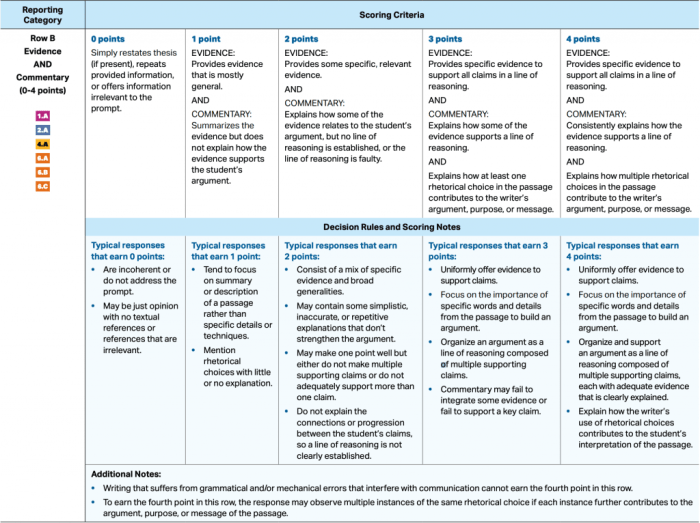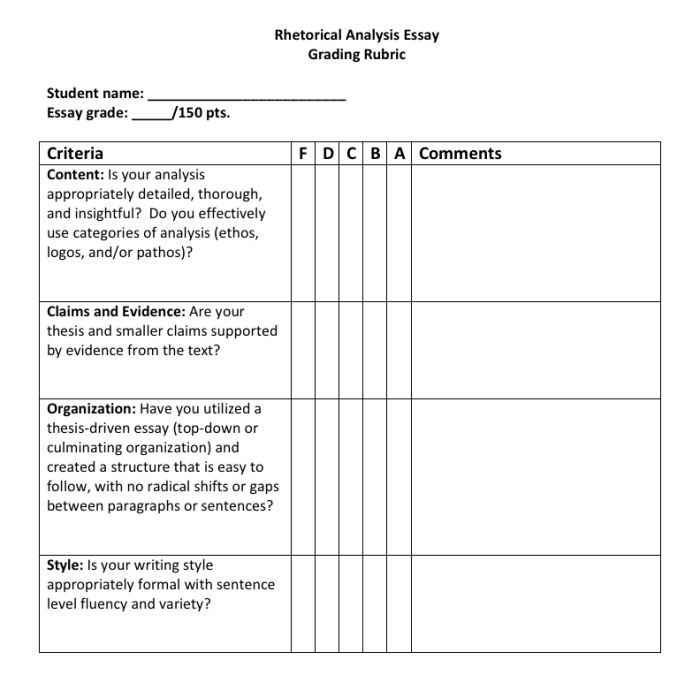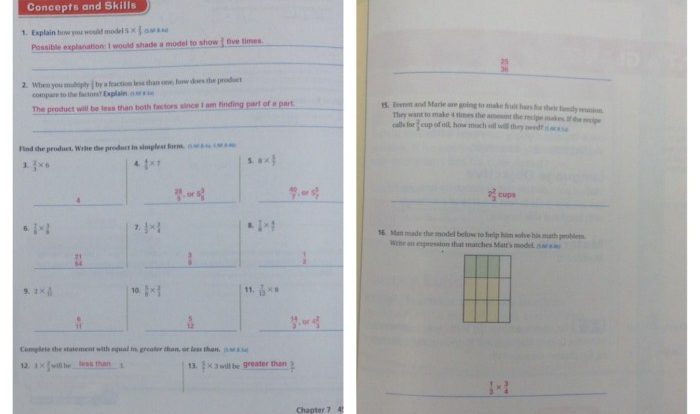Introducing the Rubric for Rhetorical Analysis Essay, this guide delves into the essential elements, design considerations, and effective implementation of rubrics to enhance the evaluation and quality of rhetorical analysis essays.
Rhetorical analysis rubrics serve as invaluable tools for educators, providing clear and objective criteria for assessing students’ understanding of argumentation, structure, language, and rhetorical devices.
Rhetorical Analysis Rubric Overview

A rubric for rhetorical analysis essays serves as a structured guide to assess the effectiveness of students’ analysis and evaluation of a particular text. It Artikels the specific criteria and standards by which the essay will be evaluated, ensuring consistency and transparency in the grading process.
Key components typically included in a rubric for rhetorical analysis essays include:
Content
- Thesis Statement:The clarity, focus, and relevance of the thesis statement, which should present a defensible argument about the text’s rhetorical strategies and their impact.
- Textual Evidence:The accuracy and depth of the student’s analysis, supported by specific and relevant evidence from the text.
- Rhetorical Analysis:The student’s understanding and application of rhetorical concepts, such as ethos, pathos, logos, and kairos, to analyze the text’s persuasive techniques.
- Organization and Structure:The logical flow and coherence of the essay, including the introduction, body paragraphs, and conclusion.
Elements of a Rhetorical Analysis Rubric

A rhetorical analysis rubric is a tool used to evaluate the effectiveness of a piece of writing. It typically includes criteria for evaluating the argument and evidence, structure and organization, style and language, and rhetorical devices.
Argument and Evidence
The argument and evidence criterion evaluates the writer’s ability to develop a clear and persuasive argument, and to support that argument with relevant and credible evidence. The rubric may assess the following:
- Clarity and coherence of the argument
- Strength and relevance of the evidence
- Use of logical fallacies
Structure and Organization
The structure and organization criterion evaluates the writer’s ability to organize their writing in a clear and logical way. The rubric may assess the following:
- Use of an effective introduction and conclusion
- Logical flow of ideas
- Use of transitions
Style and Language
The style and language criterion evaluates the writer’s ability to use language effectively to communicate their message. The rubric may assess the following:
- Clarity and conciseness of language
- Use of vivid and specific language
- Use of appropriate tone
Rhetorical Devices
The rhetorical devices criterion evaluates the writer’s ability to use rhetorical devices effectively to persuade or inform their audience. The rubric may assess the following:
- Use of metaphors, similes, and other figures of speech
- Use of rhetorical questions
- Use of appeals to emotion
Design Considerations for a Rubric
When designing a rubric for rhetorical analysis essays, it is crucial to ensure that it meets certain criteria to effectively evaluate student performance. These criteria include clarity, objectivity, fairness, and applicability to diverse rhetorical analysis essays.
To achieve clarity, the rubric should provide specific and detailed guidelines for each criterion being assessed. This ensures that students have a clear understanding of the expectations and can tailor their writing accordingly.
Objectivity and Fairness
Objectivity and fairness are essential qualities of a well-designed rubric. The criteria should be unbiased and based on observable and measurable aspects of the writing. This eliminates subjectivity and ensures that all students are evaluated consistently and fairly.
Applicability
The rubric should be applicable to a wide range of rhetorical analysis essays. It should be versatile enough to accommodate different topics, rhetorical strategies, and writing styles. This ensures that the rubric can be used effectively across various rhetorical analysis assignments.
Using a Rubric for Assessment
A rubric is an assessment tool that provides a set of criteria for evaluating student work. It helps ensure that assessments are fair, consistent, and transparent. Rubrics can be used to assess a variety of writing tasks, including rhetorical analysis essays.
To use a rubric to effectively assess rhetorical analysis essays, it is important to first understand the purpose of the assignment and the specific learning objectives that students are expected to achieve. The rubric should then be designed to measure student progress towards these objectives.
Enhancing Student Writing
A well-designed rubric can help to enhance the quality of student writing by providing students with clear expectations for their work. When students know what is expected of them, they are more likely to produce high-quality work. Rubrics can also help students to identify areas where they need to improve their writing.
Sample Rubric Template: Rubric For Rhetorical Analysis Essay
This template provides a starting point for instructors to create their own rhetorical analysis essay rubrics. It includes clear instructions on how to use the template and examples of how to assess each element of a rhetorical analysis essay.
Elements of a Rhetorical Analysis Essay Rubric
- Thesis statement:The thesis statement should be clear, concise, and arguable. It should state the main argument of the essay and provide a roadmap for the rest of the paper.
- Evidence:The evidence used to support the thesis statement should be relevant, credible, and sufficient. It should come from a variety of sources, including primary and secondary sources.
- Analysis:The analysis should explain how the evidence supports the thesis statement. It should be clear, concise, and well-organized.
- Organization:The essay should be well-organized and easy to follow. It should have a clear introduction, body, and conclusion.
- Style:The essay should be written in a clear and concise style. It should be free of errors in grammar, punctuation, and spelling.
Design Considerations for a Rubric
When designing a rubric, it is important to consider the following factors:
- The purpose of the rubric:The rubric should be designed to assess the specific learning objectives of the assignment.
- The level of students:The rubric should be appropriate for the level of students taking the course.
- The amount of time available:The rubric should be designed to be used within the time constraints of the assignment.
Using a Rubric for Assessment, Rubric for rhetorical analysis essay
Rubrics can be used to assess student work in a variety of ways. They can be used to:
- Provide feedback to students:Rubrics can help students understand what is expected of them and how their work will be evaluated.
- Improve student learning:Rubrics can help students identify areas where they need to improve their work.
- Make grading more efficient:Rubrics can help instructors grade student work more quickly and consistently.
Additional Resources

Staying updated on best practices in rhetorical analysis assessment is crucial for educators to ensure effective and reliable evaluation of students’ work. Numerous resources are available to assist educators in developing and utilizing robust rhetorical analysis rubrics.
Online Resources
-
-*National Council of Teachers of English (NCTE)
NCTE offers a wealth of resources on rhetorical analysis, including articles, lesson plans, and professional development materials.
-*The Writing Center at the University of North Carolina at Chapel Hill
Provides a comprehensive guide to rhetorical analysis, including tips for writing and assessing rhetorical analyses.
-*The Purdue Online Writing Lab (OWL)
OWL offers a variety of resources on rhetorical analysis, including an interactive rubric for assessing student writing.
Books
-
-*”Rhetorical Analysis
A Guide to Reading and Writing”* by Edward P.J. Corbett and Robert J. Connors
- *”The Bedford Guide to Writing with Readings”* by X.J. Kennedy, Dorothy M. Kennedy, and Jane E. Aaron
-*”The Rhetorical Tradition
Readings from Classical Times to the Present”* by Patricia Bizzell and Bruce Herzberg
By accessing these resources, educators can stay abreast of current trends in rhetorical analysis assessment and enhance the effectiveness of their rubrics.
User Queries
What are the key components of a rhetorical analysis rubric?
Typically, rubrics for rhetorical analysis essays include criteria for evaluating argument and evidence, structure and organization, style and language, and rhetorical devices.
How can a rubric enhance the quality of student writing?
Rubrics provide clear expectations and feedback, guiding students towards effective argumentation, logical organization, precise language, and persuasive rhetorical strategies.
What are some considerations for designing an effective rubric?
Rubrics should be clear, specific, objective, fair, and applicable to diverse rhetorical analysis essays, ensuring consistent and equitable assessment.



